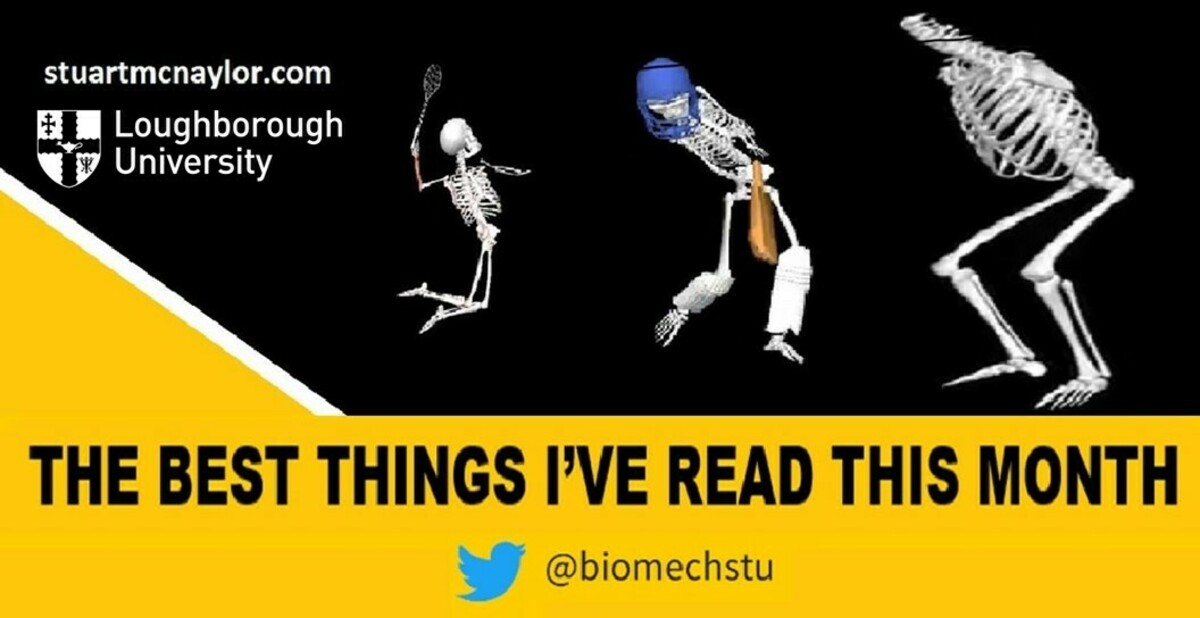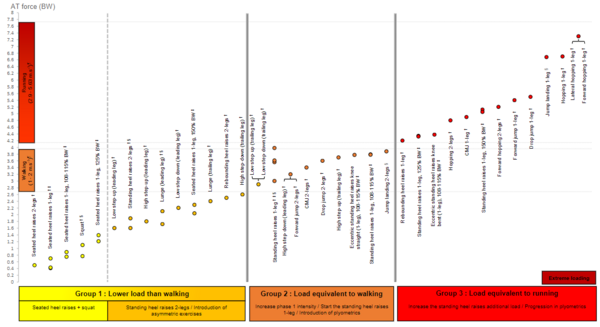
Welcome to the 47 new people who have subscribed since the last issue! If you find it useful, please share this link with any colleagues, students, or others who might like it.
Here’s what I would like to share with you this month…
Upcoming events
ISBS Mid Year Symposium: After running successfully for the past two years, the International Society of Biomechanics in Sports (ISBS) Mid Year Smposium online event will be returning for 2023. Save the dates of Wednesday 8th and Thursday 9th February, and see this link for further details or to propose a session.
ISBS Teaching Webinar: On Friday 11th November, seven biomechanists will be sharing their experiences of novel teaching methods. See the schedule here and register here .
What Have I Been Reading?
Now for the main part of the newsletter…
AI for Sport Science: Firstly, if you’re new to this topic then Jo Clubb’s blog post provides an ‘ AI Dictionary for Sport Scientists ’. This covers general terminology and types of models, algorithms, datasets, and metrics. Secondly, a recent article provides recommendations for avoiding the overuse and misuse of machine learning in research.
3D motion capture resources: The team at the University of Western Australia and the Australian Institute of Sport have released a series of best practice 3D motion capture resources . The image, video, and text resources for various stages of the motion capture process will be invaluable for researchers across the world.
EMG resources: First, a recent article that outlines an approach for teaching foundational concepts in electromyography (EMG). Second, a series of consensus statements on electrode selection , amplitude normalization , terminology , and high-density surface EMG .
Tendon loading: A systematic review and meta-analysis quantified adaptations of lower limb tendons to mechanical loading . Another systematic review synthesized Achilles tendon load during various activities , demonstrating the potential progression of exercises during rehabilitation:

Similar to the Achilles progressions quantified above, a recent study ranked 46 exercises based on peak vertical reaction force from instrumented insoles.
Factors affecting peak accelerations: During a prolonged running task to simulate intermittent team sport demands, resultant acceleration area under the curve increased at the lower and upper back but was unchanged at the foot. In related studies, peak tibial acceleration has been compared during running at different speeds and on different surfaces as well as during different phases of cricket fast bowling .
Gait retraining via musical feedback: If the goal is to reduce peak tibial accelerations during running (an objective that would need to be well justified), this PhD Academy Award study demonstrates that it can be achieved via feedback that alters the music a participant is listening to during their running. An exciting application that is also summarised in this great Twitter thread .
Open source markerless motion capture: A publication in Journal of Biomechanics presented and evaluated a a fully automated markerless motion capture workflow .
Field-based measurements from wearables: Some interesting developments in this space. First, a proof of concept study estimating muscle excitations, muscle-tendon forces, and ankle joint moments from garment-embedded electrodes . Second, full-body pose estimation from only a head-mounted device via reinforcement learning. Finally, a nice study showing that a simple pressure-sensing sock solution can reduce fall rates in a hospital setting by alerting nearby nurses as fall-risk patients stand up.
Upsampling data frequencies: Thanks to Ross Miller for highlighting this one on Twitter. An article from 1997 demonstrating the use of Shannon’s Sampling Theorem to upsample data using frequency characteristics to accurately reconstruct the time-series profile including peak values.
Synthetic biomechanical datasets: Training deep learning models require a lot of data, but many of our studies suffer from small sample sizes. However, a recent article (and excellent Twitter thread ) demonstrates a method for generating synthetic marker trajectories and ground reaction forces , from which calculated joint angles and moments were similar to those of the real dataset. Approaches such as this open up many potential uses of synthetic biomechanical data within research.
Vector coding from angular velocity: The practice of vector coding to assess coordination strategies from angle-angle plots is common within the biomechanics literature. However, a new approach has been proposed that uses angular velocities as input data and appears more robust to potential noise and potentially easier to interpret for some.
Errors in meta-analyses: Researchers have identified statistical errors in 17 of the 20 most highly cited meta-analyses in strength and conditioning research over the past 20 years. These included ignoring outliers, confusing standard deviation with standard error, ignoring within-study correlations, failing to account for within-study variance, and focusing on within rather than between-group results.
Thank You
That’s all for this month. If you found it useful, please forward this email or share this link with colleagues, students, or on social media.
Take care, and thank you for reading. I hope you have a great November.
Stu